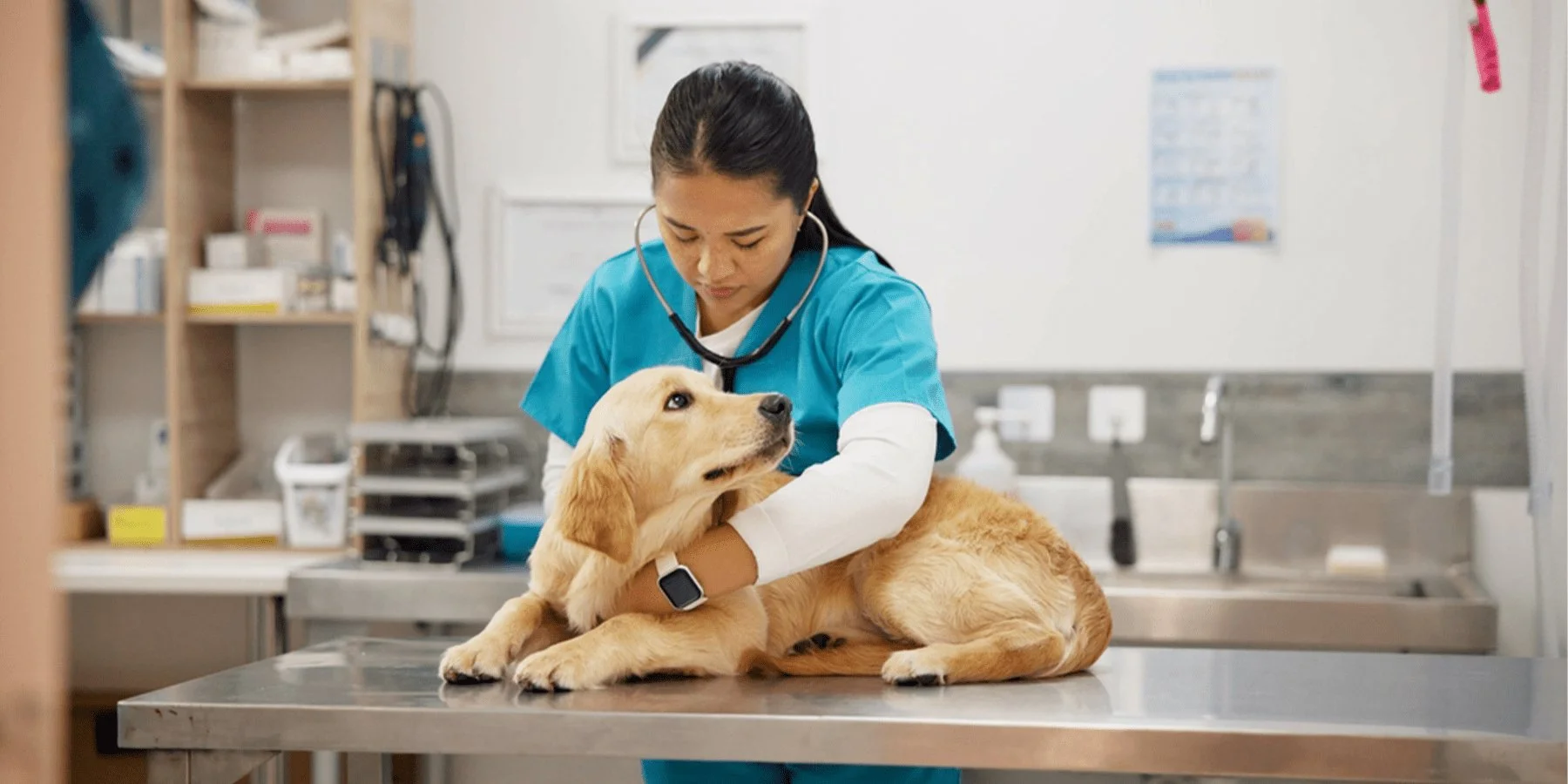PET HEALTH
Pancreatitis is the inflammation of the pancreas, an organ that helps with digestion and blood sugar regulation.1 Recognizing the signs and visiting your vet promptly can make all the difference in protecting your dog’s health.
Let’s find out more about this disease, how to keep it at bay, and how to treat it if your dog is diagnosed.
Does Your Dog Have Pancreatitis?
What Is Pancreatitis?
The pancreas is an essential organ that produces enzymes to help digest food and hormones, like insulin, which regulate blood sugar levels. Pancreatitis is a condition where the pancreas becomes inflamed because the enzymes that are normally inactive before being sent to the intestine activate inside the pancreas.1
This can also cause the enzymes to digest the organ itself over time.1
Acute pancreatitis is a short-term onset of the disease, so the damage to the pancreas is potentially reversible. Chronic pancreatitis, on the other hand, means the dog is prone to recurring episodes of the disease, and there may be permanent damage to the pancreas.1
What Causes Pancreatitis in Dogs?
Pancreatitis can occur after dogs eat something that’s high in fat — including fatty treats, dog food that’s rich in fat, table scraps, or garbage. It can also happen if your dog is given corticosteroids, which is a class of steroids used to treat allergies, inflammation, and immune system issues.1,2
Severe trauma, surgical complications, and various types of medications can also potentially cause pancreatitis in dogs. In many cases, the exact cause is unknown and the condition could happen spontaneously.1,3
Dog breeds at a potentially higher risk for pancreatitis
Studies have shown that some dog breeds seem to develop pancreatitis more often than others. While any dog can be affected, certain breeds might be more likely to develop the disease, including:3
- Miniature schnauzers
- Poodles
- Dachshunds
- Cocker spaniels
- Yorkshire terriers
Understanding your dog’s breed and any potential risk factors for pancreatitis can help you stay proactive in their care and know when to seek veterinary help, if necessary.
What Are Common Pancreatitis Symptoms in Dogs?
Pancreatitis symptoms can look different depending on whether it’s an acute or a chronic case. Acute pancreatitis usually comes on suddenly and with more intense symptoms. Chronic pancreatitis tends to show up with milder, ongoing signs or goes undiagnosed because there are no signs.4
Some of the most common signs of mild pancreatitis in dogs include:1,3
- Diarrhea
- Lethargy
- Decreased appetite
Dogs who experience a more severe form of pancreatitis may show signs such as:1,3
- Nausea
- Fever
- Weakness
- Anorexia
- Vomiting or diarrhea
- Abdominal pain
- Dehydration
If you notice any of these signs, it’s a good idea to take your dog to the vet to help them get the care they need. Early action makes a big difference in helping your dog recover from pancreatitis episodes.
How To Diagnose Canine Pancreatitis
Pancreatitis can be difficult to diagnose because the symptoms are often similar to other diseases, aren’t pancreas-specific, or may not show up at all. Veterinarians usually start by looking at your dog’s medical history and clinical signs to narrow down whether pancreatitis could be the culprit.1,3
Ultrasounds and X-rays can help provide some more answers, especially if there’s visible swelling or inflammation in the pancreas. These imaging techniques provide a clearer picture of the abdominal area and can help detect anything that might not show up on blood tests.1,3
Veterinarians may also measure pancreatic lipase immunoreactivity (PLI) to diagnose pancreatitis using SNAP cPL and/or Specific Canine Pancreatic Lipase (Spec-cPL) tests. These quick, in-clinic blood tests measure for high values of pancreatic lipase, an enzyme linked to pancreatitis, and can help more accurately diagnose the disease.1,3
How Is Pancreatitis in Dogs Treated?
Treating pancreatitis in dogs starts with an early diagnosis and supportive care. How your vet treats the condition often depends on how severe it is, but the goal is to get your dog feeling better as quickly as possible.
Let’s take a look at how treatment options might vary depending on whether your dog has an acute or chronic case of pancreatitis.
Acute pancreatitis treatment
If your dog has acute pancreatitis, they often need quick, intensive medical treatment to address the underlying cause, provide supportive care, and manage symptoms. Treatments may include:1,3
- Hydrating your dog with intravenous (IV) fluids
- Relieving them of any pain with medications or anti-inflammatories
- Giving antibiotics to treat infections
- Providing anti-nausea meds and potentially withholding food to give the pancreas a rest (if the dog is vomiting)
Most dogs stay in the hospital for a few days to help them recover, but with proper care, they can start feeling better soon.1 Severe cases may require vets to closely monitor your pup and provide medical care focused on preventing systemic complications or shock.1,3
Chronic pancreatitis treatment
Chronic pancreatitis often requires a similar approach to acute cases, starting with supportive care. Your vet will address any underlying causes or risk factors that might make the condition worse. Managing your dog’s symptoms with fluids, pain relief, and anti-nausea medications is usually the first step, and then they’ll monitor their progression.3
If supportive care alone isn’t improving your dog’s condition, your vet may explore trial therapies, like using immunosuppressive agents to help ease the inflammation in the pancreas.3
Once your dog is home and starting to recover, your vet might recommend a temporary low-fat diet. However, some cases could require a permanent change to your dog’s diet. An ultra-low-fat diet can help take the load off your pet’s pancreas and keep them healthier.3
Prognosis for Dogs With Pancreatitis
Your dog’s prognosis depends on how severe the pancreatitis is and how quickly it can be treated. While acute pancreatitis can sometimes cause serious complications, dogs with mild cases can usually recover with prompt care.1,3
Sometimes, pancreatitis can cause lasting damage, leading to:1
- Diabetes mellitus: When too many cells that produce insulin are severely damaged, it may cause diabetes.
- Exocrine pancreatic insufficiency (EPI): If too many cells that produce digestive enzymes are severely damaged, the pancreas won’t be able to produce enough to properly digest foods.
- Internal adhesions: Pancreatitis may cause painful adhesions (scar tissue) between abdominal organs.
Detecting any of the pancreatitis symptoms early on — and working closely with your vet — can help your pup recover and cope with any long-term effects.
MetLife Pet Insurance Can Help With a Pancreatitis Diagnosis
Pancreatitis diagnosis, treatment, and long-term care can be costly, especially if they need to spend a few days in an animal hospital. Dog insurance from MetLife Pet can help make pet health emergency costs like this more manageable.
For example, Scrunch, a young, mixed-breed pup in North Carolina was diagnosed with and treated for pancreatitis and had to stay in the hospital for a short while. His care cost around $3,000. With their MetLife Pet insurance policy, Scruch’s family was reimbursed nearly $2,600 of the vet bill.5
Enrolling your dog in a MetLife Pet policy can help with coverage for various expenses. We can typically cover diagnostic testing, hospitalizations, injuries, illnesses, and more. Ensure quality care for your pet (and wallet) by getting a free quote for coverage today.
Dr. Hunter Finn has been paid by MetLife to discuss the importance of choosing pet insurance. He is an integrative veterinary expert first, and social media star second. America’s favorite veterinarian owns Pet Method in McKinney, Texas, where he cares for pets while prioritizing their emotional well-being. When he’s not at his clinic, he’s starring in viral videos on TikTok (2 million followers) and Instagram (500K followers) — where he’s been known to snuggle puppies and conquer the latest dance trends.


